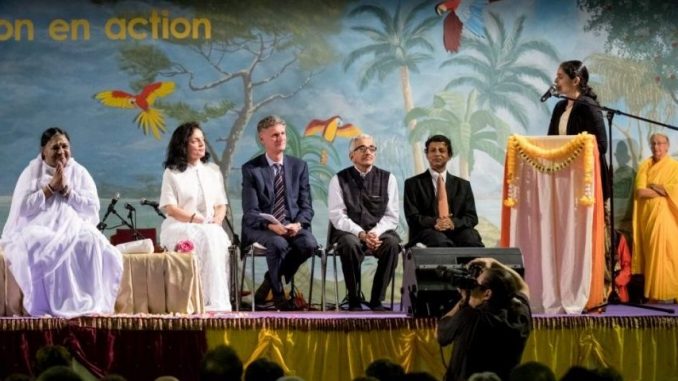
Coimbatore : India – In the fall of 2016, Amrita University was awarded India’s first ever UNESCO Chair on gender equality and women’s empowerment. Amrita is now a part of an esteemed group of UNESCO chairs on gender equality all over the world, paving the way for future international collaborations.
“This recognition by the United Nations Educational, Scientific and Cultural Organization (UNESCO) affirms Amrita University’s strength in addressing global issues,” said Ruchira Kamboj, ambassador and permanent representative of India to UNESCO, Paris.
The chair is housed at The Center for Gender Equality and Women’s Empowerment, a research-focused academic centre for promoting gender equality with a special focus on technology and other innovative methods. Prof Rao R Bhavani assumes the role of the chair and has started remarkable work with the team at the centre. One of the major activities is a “Vulnerability Mapping Project” which aims to measure the well-being of a community by looking at the vulnerabilities mapped along six verticals.
“At present, there is no comprehensive framework to effectively capture the extent and scope of social issues,” says Prof Bhavani. “By empowering women and those at the grassroots level who are directly affected, we can gather relevant data that will address social challenges through a holistic and sustainable approach. Vulnerability mapping is the key to understanding these complex social problems.”
The present digital age in which we live has not only allowed us to collect data and analyse it in ways previous generations could not imagine; it has also given way to the phenomenon of apps as a medium to carry out services and present content across all platforms. By combining the two trending fields of big data analytics and app development, a toolkit in the form of an app will layer the data gathered about the vulnerabilities in the villages over a geospatial map and can present vulnerabilities in a way where life-saving interventions can be made. This is a prime example of how technological innovations meet humanitarian applications at Amrita, providing a model that is immensely beneficial to society.
“There is no such chair with this objective,” said Kamboj. “It is a remarkable strategy to map out vulnerabilities through research and technology and exchange of best practices in the villages to look for the best possible solutions.”
As society and technology progress with time, it is important to realise that such advancements should not only be used for applications in the urban sphere with “smart” homes, phones, and cars on the rise, but should also be used for the uplifting of those less fortunate than us. Technological advances become truly fruitful when we can use them for the betterment of all lives, looking outside the metropolitan bubble. This is the true goal of society, and with the addition of the UNESCO chair, Amrita looks to bring the hands of technology and social work together and lead the charge in developing India’s rural communities.
Source: QS WOW News (press release)

Leave a Reply